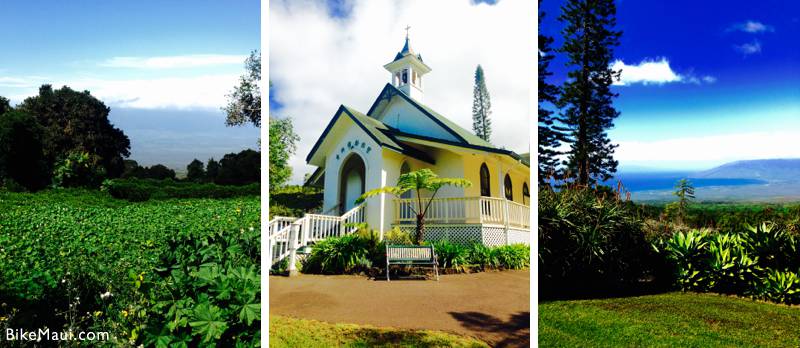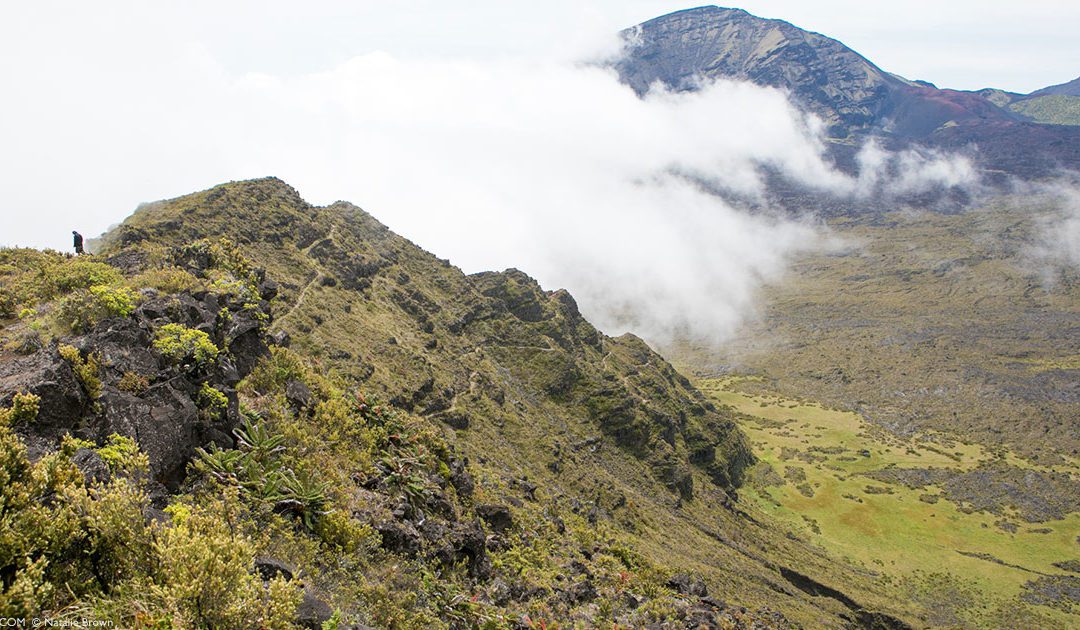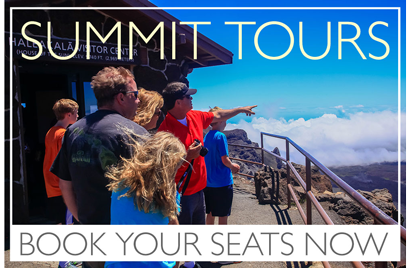With its Mars-like landscape and sweeping views of the gaping crater below, the summit area of Haleakala National Park receives the bulk of attention from visitors, residents, and travel outlets alike. And while there’s no argument that the summit’s grandeur is one for the books, countless other splendors on Haleakala are all too often missed by visitors. So, what is there to do on Haleakala beyond visiting the lofty summit? Well, a lot- from day hikes through mystic native shrubland to coffee tasting along the undulating slopes of Upcountry. Let’s get to know Maui’s massive volcano, inside and out. Here are the top ten things to do on Haleakala.

Watch a spectacular sunrise, mid-day, or sunset.
Admittedly, this isn’t much of a secret, but it definitely tops the list. Just ask iconic 19th-century writer Mark Twain. After witnessing the sunrise from the rim of Haleakala Crater, Twain described the event as the “sublimest spectacle” he had ever seen. While more than a century has passed since the prolific writer’s visit, the sentiment is echoed by thousands of Haleakala visitors every year. However, unlike when Twain visited in the 1860s, reservations are now required to view the celebrated sunrise- and they’re a hot commodity, to say the least. If you can’t snag a sunrise reservation, all is not lost. Visitors are starting to catch on that sunsets at Haleakala aren’t too shabby either- and by not too shabby, we mean potentially as stunning as its dawn counterpart. Mid-day is also pretty spectacular. You can visit the summit in many ways. Of course, we prefer doing a bike ride after sunrise. But you can also take van tour to Haleakala. Either way, you don’t need to make separate sunrise reservations if you go on a tour with us.
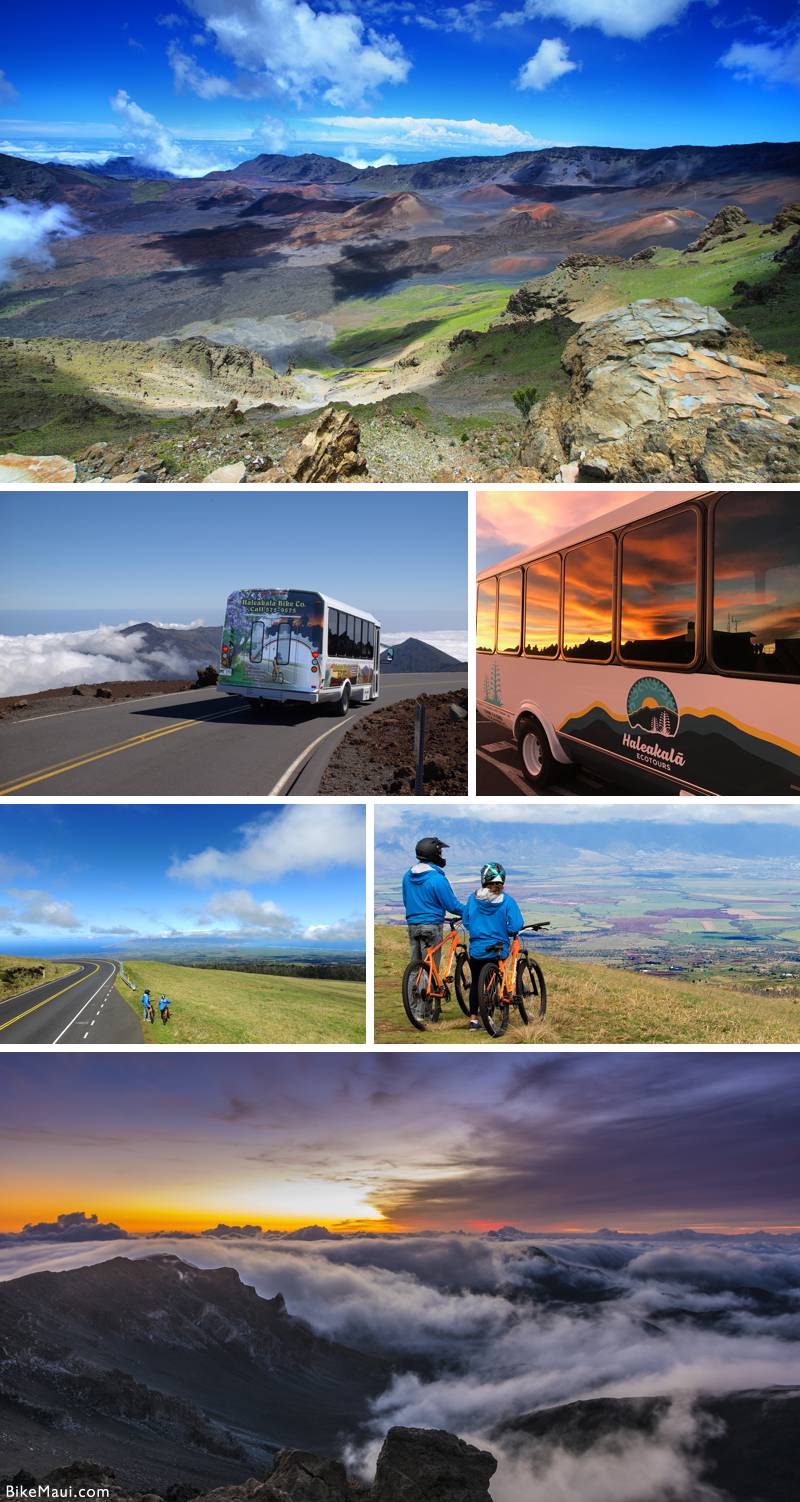

Stay overnight in a campsite or cabin.
This activity definitely requires some planning; however, an overnight stay in the crater is undoubtedly an experience of a lifetime. There are three cabins and two campsites located within the confines of the crater and one drive-up campsite at Hosmer Grove. Within the crater, you’ll find Paliku and Holua, both host to campsites and cabins, and Kapalaoa, which is a cabin only. Each cabin is situated in a different corner of the crater. Kapalaoa near the cinder deserts of Sliding Sands Trail, Paliku nestled against a dense rainforested wall, and Holua amid misty grasslands and fresh (relatively speaking) lava flows. Waking up in the heart of Haleakala’s isolated, silent volcanic valley is an unparalleled spiritual experience- which could explain why cabins are in such high demand. If you plan on nabbing a cabin, start planning six months in advance or beyond. Campsites are easier to come by, but camping also requires lugging your gear across seas of cinder and lava. For all cabin/camping reservations, head to the Haleakala reservation site on recreation.gov.


Explore Hosmer Grove and watch for native birds.
Perched at nearly 7,000 feet, Hosmer Grove’s cool conifer forest is more akin to the Pacific Northwest than Maui. Once decimated by cattle and void of trees, the grove is the result of an experimental forestry plot, planted in 1909 by Hawaii’s Superintendent of Forestry, Ralph Hosmer. Sitting just a few meters beyond the entrance to the national park, Hosmer Grove is home to a campground and a self-guided nature trail that winds through pines, eucalyptus, and native trees like ‘ohi’a. The route brings visitors to a gulch overlook brimming with native flora. Here, Hawaii’s rare native forest birds thrive, and you can often see scarlet i’iwis and brilliant green-yellow ‘amakihis flitting around through the trees. Two mounted binoculars along the gulch can help you get a closer look, or you can bring your own for Maui bird watching if you’re an avid birder.


Stop by the Leleiwi and Kalahaku overlooks.
Most visitors blaze past the two overlooks on their journey to and from the summit, but the Leleiwi and Kalahaku overlooks are well worth a stop. While they might appear rather unassuming from the park road, both lookouts offer remarkable views of Haleakala’s yawning crater. Kalahaku sits on the crater rim at 9,324′, placing observers nearly eye-level with the Haleakala’s south wall. Informative plaques at Kalahaku’s observation deck detail the valley’s fascinating geological history. In addition, the overlook provides a unique vantage point of the crater floor thousands of feet below. You can spot hikers winding along the trails within the crater, dwarfed by Haleakala’s sheer immensity. Bookmark Kalahaku for when you descend from the summit area- left-hand turns are not permitted into the parking lot. Lower in elevation, the Leleiwi overlook is accessible via a short 5-15 minute walk. Often less crowded than Kalahaku overlook, this vantage point peers into the grassy northern quadrant of the crater. Leleiwi looks out over the Ko’olau Gap, the 8,000′ peak of Hanakauhi, and the Halemau’u Trail, carved into a sheer cliffside.
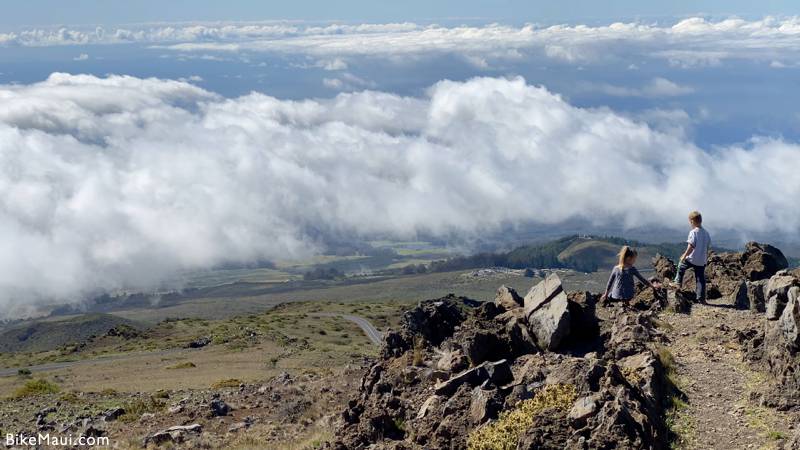

Peruse the two visitor centers.
There are two visitor centers in the summit district of the park. The first, known as the Haleakala National Park Headquarters Visitor Center, is located a mile past the park’s entrance. The second, Haleakala Visitor Center, sits on the crater’s rim at 9,740′. Both visitor centers host exhibits detailing the park’s natural and cultural history, various informative displays, Hawaii Pacific Parks Association bookstores, and souvenir shops. The visitor centers are also great places to talk story with park rangers and learn more about Haleakala from the experts. (The Haleakala National Park Headquarters Visitor Center is currently closed due to covid-19. However, it will reopen when the park begins operating at full capacity. The Haleakala Visitor Center is open with varied hours at reduced capacity.)


Go stargazing.
Thanks to Haleakala’s astonishing elevation, the area is home to a clear atmosphere and void of light pollution- ranking the mountain among the top stargazing locations in the country. Stick around after sunset (if you can brave the plummeting temperatures), and watch for the glimmering stripe of the milky way. Yes, Haleakala is home to one of the most important observatories in the world. Bring along a star map or download a stargazing app to point out constellations, or, if you want an up-close-and-personal planetary experience, take a guided stargazing tour.


Go for a day hike.
A network of Haleakala hiking trails snakes through Haleakala’s summit district, ranging from multi-day backpacking trips to moderate day treks. The 3.9-mile out-and-back trek to Holua Cabin on the Halemau’u Trail is one of the most popular day hikes. Situated at about 8,000 feet and often shrouded in mist, the Halemau’u Trail switchbacks down one of the crater’s sheer northern walls. This route winds through native shrubland, lava flows, and grassland. In stark contrast, the ultra-popular Keonehe’ehe’e “Sliding Sands” Trail traverses the otherworldly desert near Haleakala’s summit, amid towering cinder cones and silverswords. At nearly 10,000 feet, descending just a mile or two on Sliding Sands Trail is arduous enough to be deemed a day hike.
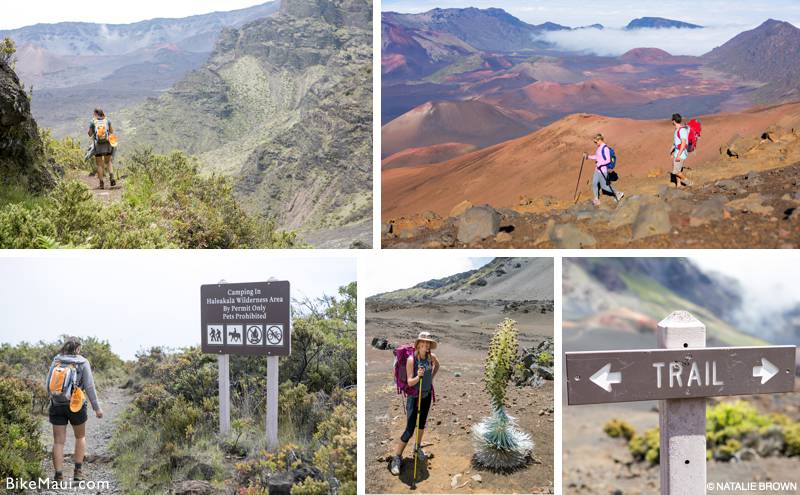

Down the hill…
Stop for lunch at O’o Farm.
Nestled on the rolling slopes of Haleakala in Kula, O’o Farm boasts one of Maui’s most unique dining experiences. This 8.5 acre diversified sustainable farm hosts a farm tour/lunch package, where guests tour the verdant expanses of the property, learn about the importance of organic agriculture, then feast on a fresh lunch made with ingredients harvested along the tour (reservations only). Visitors will be hard-pressed to find a more serene dining setting than O’o Farm’s lush location in Maui’s highlands, and the healthy meal is the perfect way to cap a long morning of exploring Haleakala Crater. If you’re keen on filling up before ascending to the national park, O’o Farm also hosts a breakfast and coffee tour. Reservations for both experiences are required.
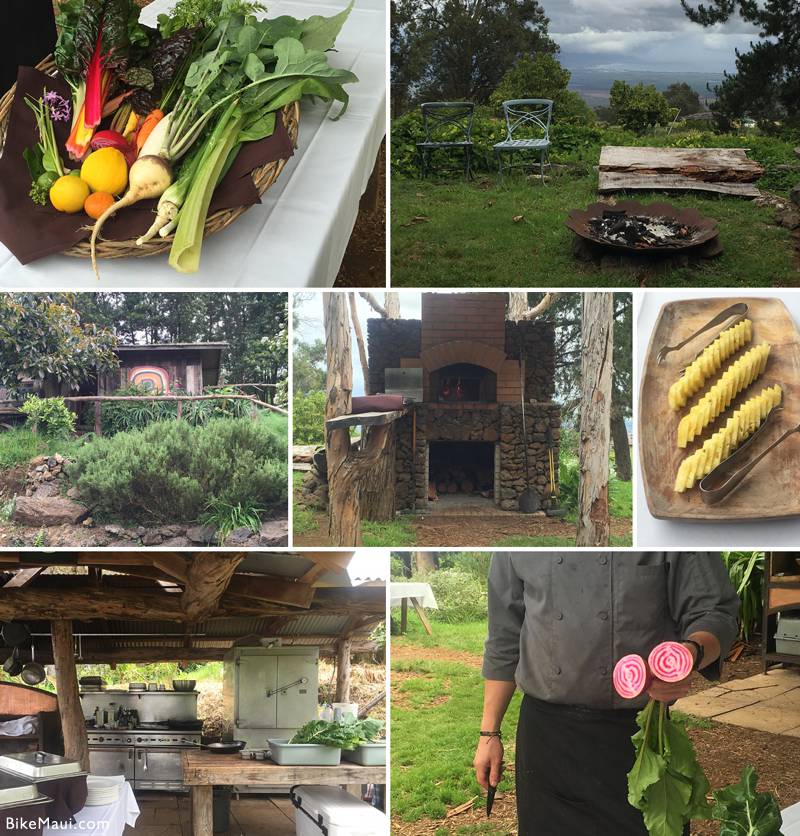

Feed Alpacas and Cuddle Angora Bunnies
One of the newest Upcountry farm experiences, and still under the radar among both visitors and locals, is a truly unique experience in Kula. At the Maui Alpaca Farm, you get to feed and pet alpacas, cuddle with fluffy angora bunnies, and learn how to process and spin their fiber. They also have a beautiful little shop with the softest hats, carves, mittens, and more. If you’ve got little ones, this is especially worth doing.

Wander the grounds at Ali’i Lavender.
The expansive 13.5 acres at Ali’i Lavender’s tranquil Kula property is dotted with hydrangea, protea, olive trees, succulents, and, most importantly, lavender. Over 55,000 lavender plants spanning 20 different varieties are grown at Ali’i Lavender. Meandering the vast, tranquil grounds will reveal panoramic bi-coastal views, peaceful alcoves, manicured gardens, quiet gazebos, and maybe even a peek at the red-orange sands near the summit of Haleakala. Ali’i Lavender also boasts a unique gift shop with an array of lavender products- like lavender sugar, lavender seasoning, lavender lotion, and much, much more. However, the lavender scone with lilikoi jelly and lavender tea is a decided favorite. This combo is ideal for warming up post-Haleakala sunrise. Currently, the farm is only open Friday-Monday, 10 am to 4 pm.
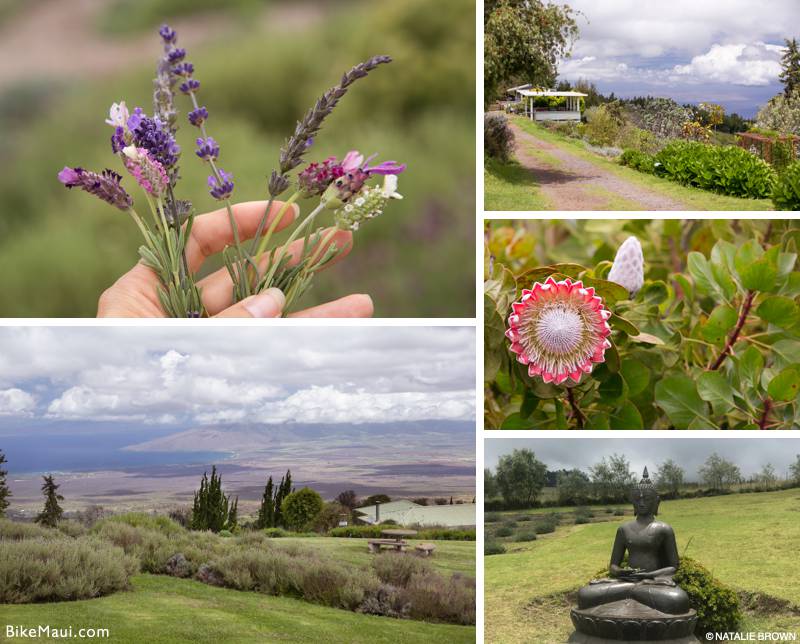

Venture to the verdant Keokea region.
Keokea is Upcountry’s most quaint outpost- so small that if you blink, you might miss it. However, what Keokea lacks in size, it makes up for in charm- and coffee. The town’s main drag (if you can go so far to call it that) is home to no more than an art gallery, an old-timey general store, a gas station, and a coffee shop- albeit a famous one, known as Grandma’s Coffee House. Grandma’s put itself on the map by serving up Haleakala-grown-and-roasted cups of joe and heaping breakfasts, including one of the finest loco-mocos on the island. A trip to Grandma’s alone is worth the drive to Keokea, but the region’s resplendent countryside certainly deserves a nod.
